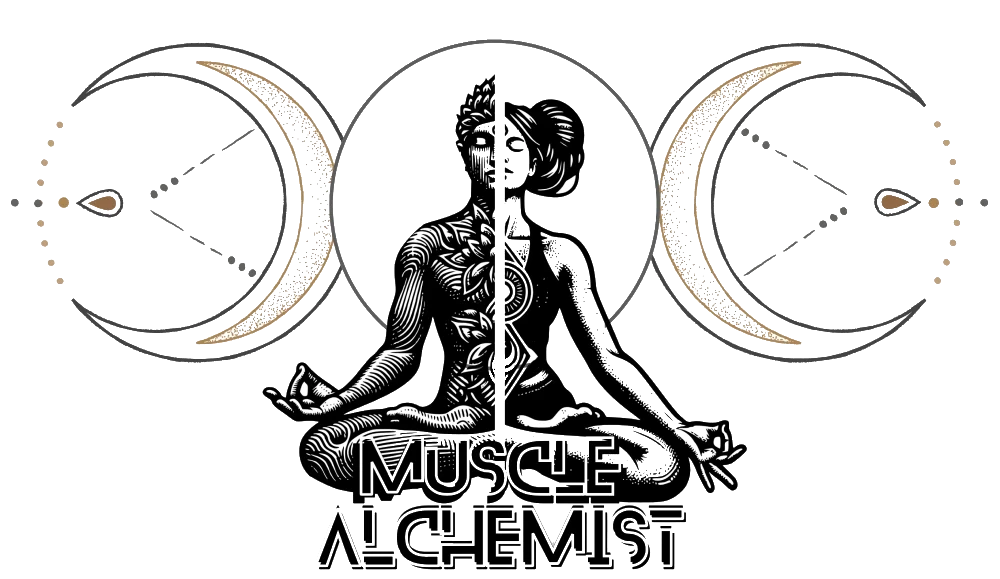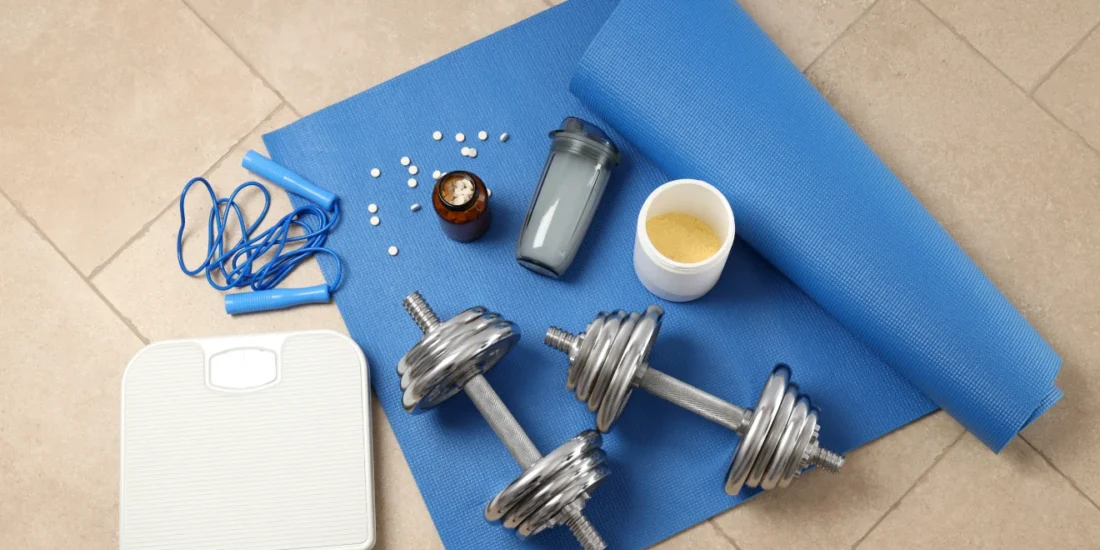Fitness is much more than a physical state; it is a holistic approach to living well. It encompasses not only the health of our body but also our mental well-being and emotional balance. A focus on fitness improves our performance in daily tasks and elevates our ability to thrive in competitive sports. Fitness isn’t just about looking good; it’s about feeling good, moving freely, and being prepared to face physical challenges both in life and in sports.
Fitness involves multiple aspects that work together to maintain and improve your overall health. Understanding these fundamental components is essential for anyone seeking to embark on a fitness journey. These components, though distinct, are interconnected, and their benefits extend into various areas of life—from improving energy levels to enhancing athletic abilities. This chapter explores these aspects in-depth, offering a comprehensive guide for beginners and enthusiasts alike.
The 5 Components of Fitness
Fitness is broken down into five key components that serve as the foundation for a healthy and active life. These components are interconnected, each playing a vital role in enhancing performance in sports and day-to-day activities:
- Cardiovascular EnduranceCardiovascular endurance refers to the ability of the heart and lungs to work efficiently during prolonged physical activity. Aerobic exercises, like running, swimming, and cycling, are designed to improve cardiovascular health. A strong cardiovascular system allows your body to perform tasks without tiring quickly.
The efficiency of the heart, lungs, and blood vessels in delivering oxygen during prolonged exercise.
- Muscular StrengthMuscular strength is the force your muscles can exert during physical activity. It’s the ability to lift or resist weight. Engaging in strength training exercises, such as weightlifting or bodyweight exercises, builds this component. It contributes to functional movement, helping you perform everyday tasks like lifting objects with ease.
The maximal force that a muscle or muscle group can generate in a single effort.
- Muscular EnduranceThis component focuses on the muscles’ ability to perform repetitive movements over time. It’s different from strength because it deals with stamina rather than maximum force. Exercises like cycling, rowing, and push-ups improve muscular endurance. Enhancing this component allows you to avoid fatigue during extended physical efforts.
The ability of a muscle or group of muscles to sustain repeated contractions over time.
- Flexibility Flexibility refers to the range of motion in your joints and muscles. Having good flexibility ensures that your muscles and joints are able to perform movements effectively without strain. Stretching and yoga exercises can significantly improve flexibility. It helps prevent injuries, improves posture, and enhances mobility in everyday movements.
- Body CompositionBody composition is the ratio of fat mass to lean mass (muscles, bones, and organs) in your body. This component is a better indicator of health than weight alone. Maintaining a healthy body composition—low body fat and high muscle mass—improves metabolism and contributes to overall physical well-being.
The ratio of lean mass (muscle, bone, water) to fat mass in the body.
How the 5 Components of Fitness Contribute to an Increase in Performance in Life and Competitive Sports
Each of the five components of fitness plays a critical role in improving both your everyday life performance and your athletic ability. Let’s break down how they contribute:
- Cardiovascular Endurance
The efficiency of the heart, lungs, and blood vessels in delivering oxygen during prolonged exercise.
- In Everyday Life: Good cardiovascular health provides you with the stamina needed to perform tasks like walking, climbing stairs, or carrying groceries without getting overly tired.
- In Sports: In sports, cardiovascular endurance is essential for sustaining high-intensity efforts over time, whether you’re running a marathon or playing an entire soccer game.
- Muscular Strength
The maximal force that a muscle or muscle group can generate in a single effort.
- In Everyday Life: Strength is key to performing tasks that require lifting, carrying, or pushing. Having strong muscles reduces the risk of injury and strain from routine activities.
- In Sports: In competitive sports, strength is crucial for explosive power and effective performance in activities like sprinting, football, or weightlifting.
- Muscular Endurance
The ability of a muscle or group of muscles to sustain repeated contractions over time.
- In Everyday Life: Muscular endurance makes it easier to perform repetitive tasks, such as carrying bags or standing for long periods, without fatigue setting in.
- In Sports: Muscular endurance helps athletes maintain a high level of performance during activities that require prolonged exertion, such as cycling, swimming, and rowing.
- Flexibility
- In Everyday Life: Flexibility helps with everyday activities like bending, reaching, and twisting. It reduces the risk of injury when performing common tasks and improves posture.
- In Sports: Flexibility enhances performance in sports that involve dynamic movements, like gymnastics or martial arts. It also aids in recovery after intense physical activity.
- Body Composition
The ratio of lean mass (muscle, bone, water) to fat mass in the body.
- In Everyday Life: Maintaining a healthy body composition ensures that your body functions optimally, leading to better overall health and energy levels. It improves metabolic health and supports a healthy immune system.
- In Sports: A balanced body composition enhances athletic performance by promoting lean muscle mass and reducing excess fat, which boosts strength, speed, and endurance.
Understanding the Interdependence Between the 5 Components of Fitness
The five components of fitness are interrelated, and improving one often positively affects the others. However, each component requires specific attention for optimal growth. Here’s how they work together:
- Cardiovascular enduranceenhances recovery, which allows you to build strength and endurance more effectively.
The efficiency of the heart, lungs, and blood vessels in delivering oxygen during prolonged exercise.
- Strength and endurancecomplement each other—strong muscles can perform for longer, while endurance exercises improve muscle stamina.
Endurance is the ability of the body or a specific muscle group to sustain prolonged physical activity without fatigue.
- Flexibility can improve muscle performance and reduce the risk of injury, helping with both strength and endurance training.
- Body compositioncan be influenced by cardiovascular exercise, strength training, and flexibility routines. The better the body composition, the easier it is to perform all physical tasks.
The ratio of lean mass (muscle, bone, water) to fat mass in the body.
Focusing on all five components ensures a well-rounded approach to fitness. Ignoring one may impede progress in others, which is why a balanced regimen that addresses all areas is essential.
How to Achieve Improvement in the 5 Components of Fitness
Each component requires specific exercises and training strategies. Here’s how you can improve each one:
- Cardiovascular Endurance
The efficiency of the heart, lungs, and blood vessels in delivering oxygen during prolonged exercise.
- Strategy: Engage in aerobic exercises such as running, swimming, cycling, or walking. Start with moderate activity, then gradually increase the intensity and duration. High-Intensity Interval Training (HIIT) is an excellent method for improving cardiovascular health in less time.
- Tip: Aim for at least 150 minutes of moderate aerobic activity or 75 minutes of vigorous activity per week for optimal cardiovascular health.
- Muscular Strength
The maximal force that a muscle or muscle group can generate in a single effort.
- Strategy: Incorporate weightlifting or bodyweight exercises like squats, deadlifts, and push-ups into your routine. Start with moderate weights and increase gradually as you build strength.
- Tip: Focus on progressive overload—gradually increasing the weight or intensity of your workouts to build muscle.
- Muscular Endurance
The ability of a muscle or group of muscles to sustain repeated contractions over time.
- Strategy: Perform high-repetition exercises using lighter weights or your own body weight. Activities like push-ups, lunges, and cycling are great ways to build muscular endurance.
- Tip: Perform 12–20 reps per set, focusing on controlled movements to enhance endurance without overloading your muscles.
- Flexibility
- Strategy: Incorporate stretching into your daily routine. Stretching before exercise helps prepare your muscles for activity, while post-workout stretching aids in recovery and flexibility improvement.
- Tip: Practice yoga or Pilates, which are excellent for increasing flexibility, mobility, and balance.
- Body Composition
The ratio of lean mass (muscle, bone, water) to fat mass in the body.
- Strategy: Combine regular physical activity with a balanced diet. Focus on strength training and cardiovascular exercise to reduce body fat and build lean muscle mass.
- Tip: Maintain a healthy, balanced diet with plenty of whole foods, lean proteins, and healthy fats. Avoid processed foods and excess sugar.
Fundamentals of Fitness
Achieving and maintaining fitness requires a holistic approach that goes beyond exercise. The basics of fitness include proper nutrition, regular exercise, mental health, and rest. A well-rounded fitness routine should be sustainable, ensuring long-term benefits.
- Consistency: Regular exercise is key. Stick to a routine that you can maintain consistently for long-term results.
- Recovery: Rest is vital for muscle repair and overall recovery. Adequate sleep and proper rest days are crucial components of any fitness plan.
- Nutrition: A balanced diet fuels your body for optimal performance. Focus on eating nutrient-dense foods to support energy levels and muscle recovery.
- Progressive Overload: Gradually increase the intensity, volume, or difficulty of your exercises to continue challenging your body and making progress.
The systematic increase of stress placed on the body during training to stimulate muscle growth and strength gains.
Benefits of Exercise
Exercise has profound benefits for both physical and mental well-being. Here’s why it’s important:
- Physical Health Benefits: Exercise reduces the risk of chronic diseases like heart disease, diabetes, and obesity. It helps maintain healthy blood pressure, cholesterol levels, and improves metabolism.
- Mental Health Benefits: Physical activity promotes the release of endorphins, which reduce stress, anxiety, and depression. It also improves mood, cognition, and sleep quality.
- Increased Energy: Regular exercise boosts energy levels, making daily tasks feel easier and less tiring.
- Improved Self-Esteem: Achieving fitness goals and seeing physical improvements leads to higher self-confidence and a better body image.
In conclusion, fitness is a comprehensive approach that impacts all areas of life. By focusing on the five components of fitness—cardiovascular endurance, muscular strength, muscular endurance, flexibility, and body composition—you can enhance your physical performance and improve your quality of life. Combining proper exercise with a healthy diet and sufficient recovery is the key to achieving lasting fitness results. Fitness is not just about looking better; it’s about living better, with a healthier body and a more vibrant life.

